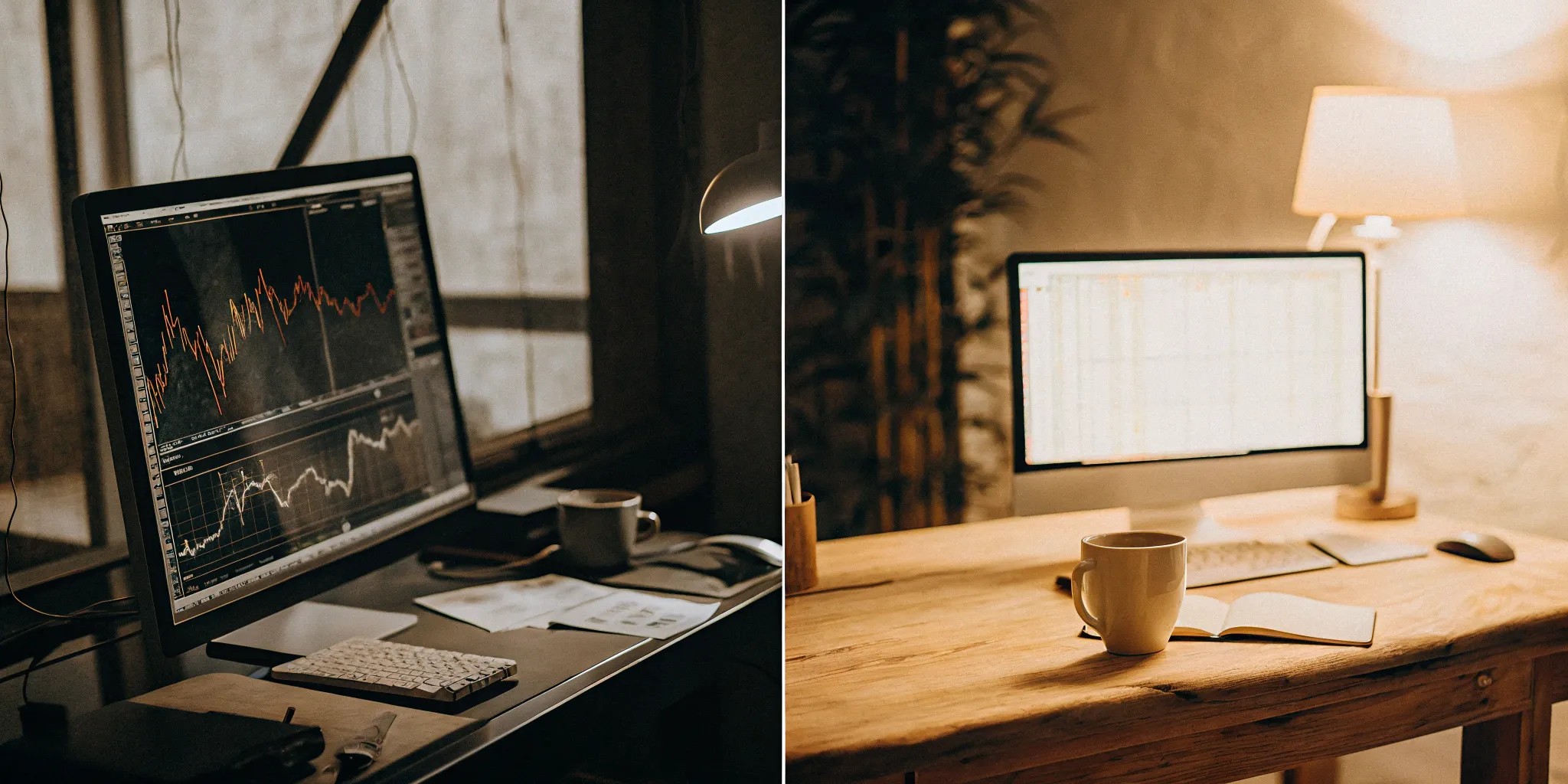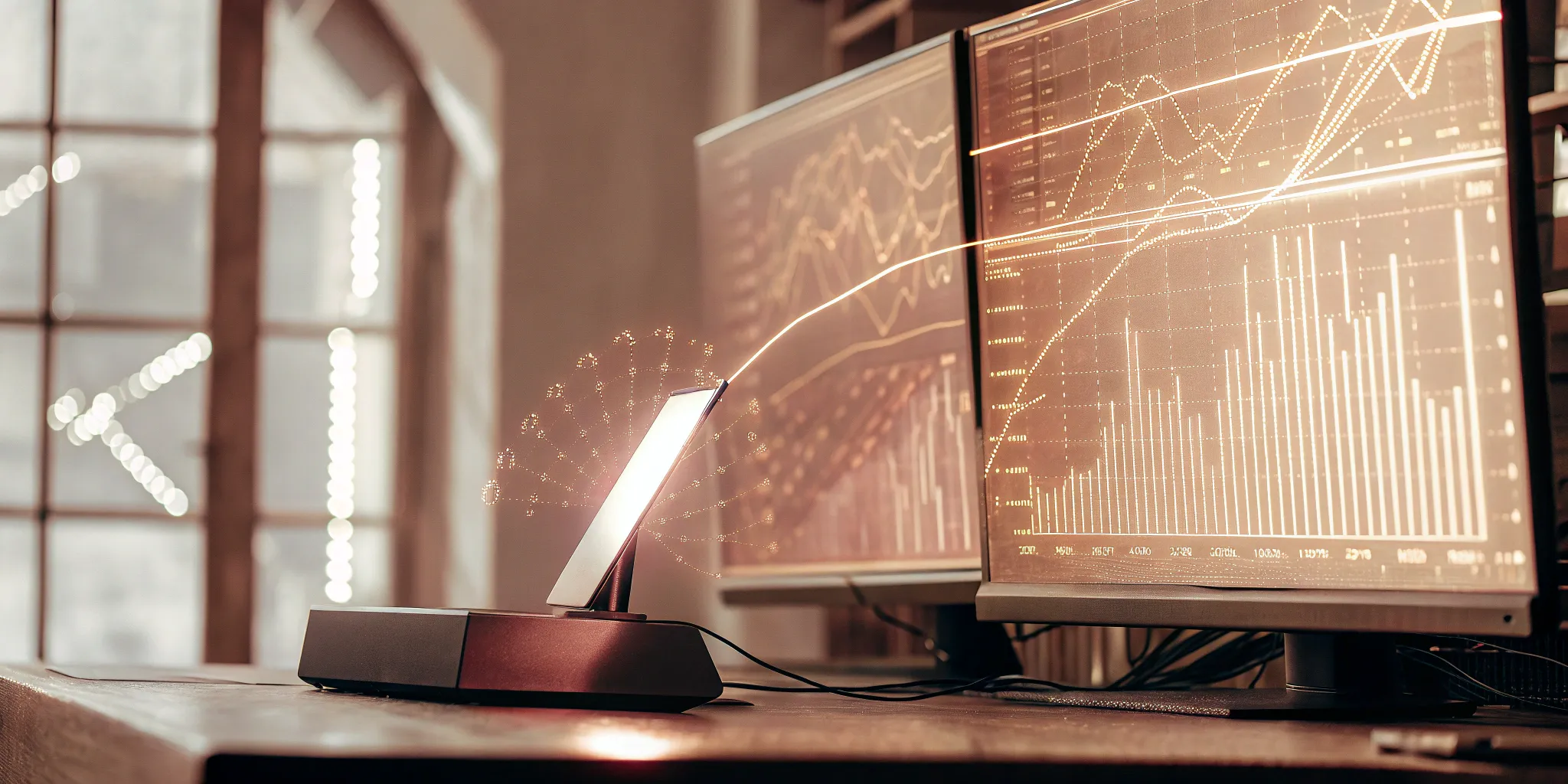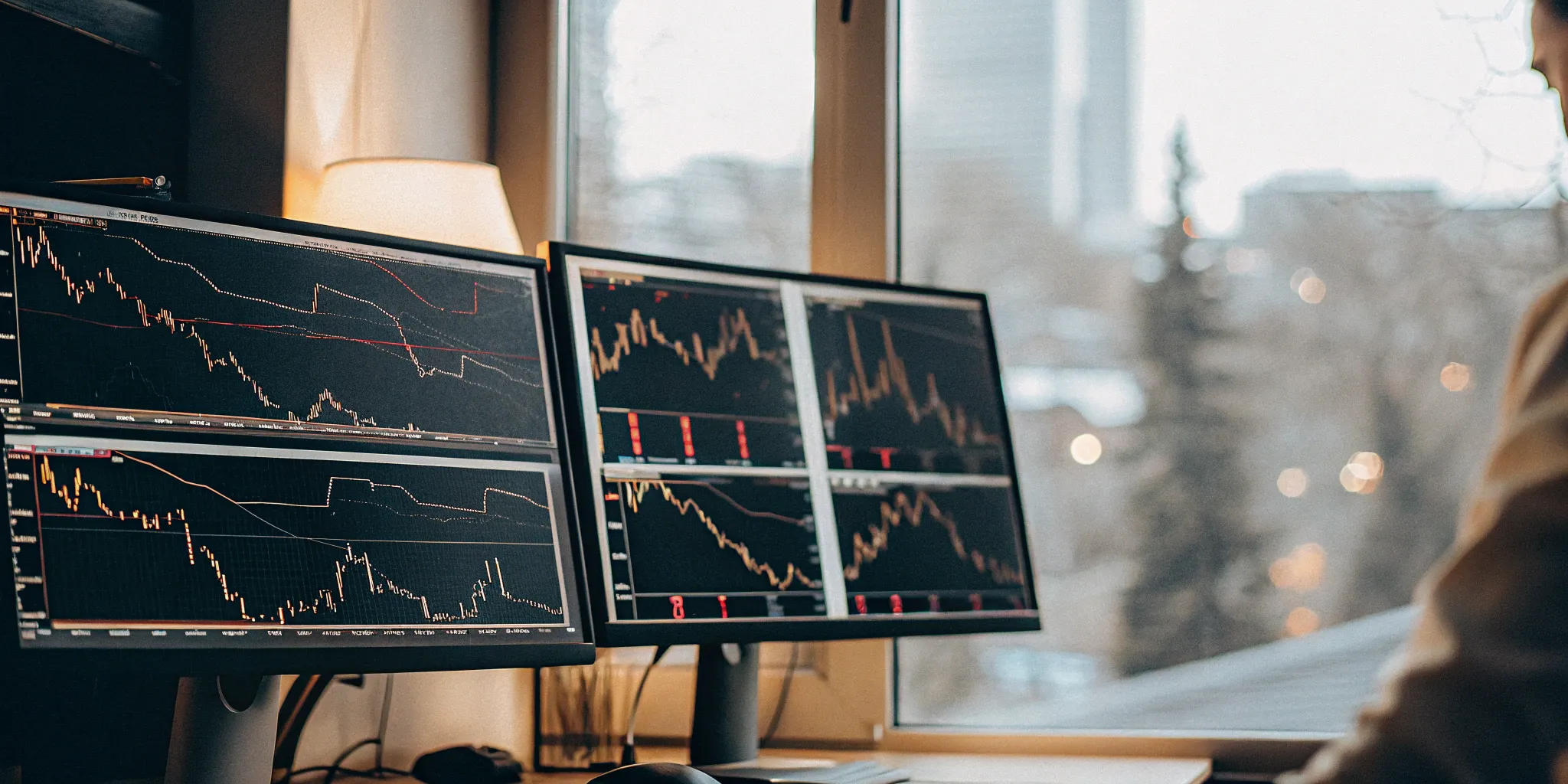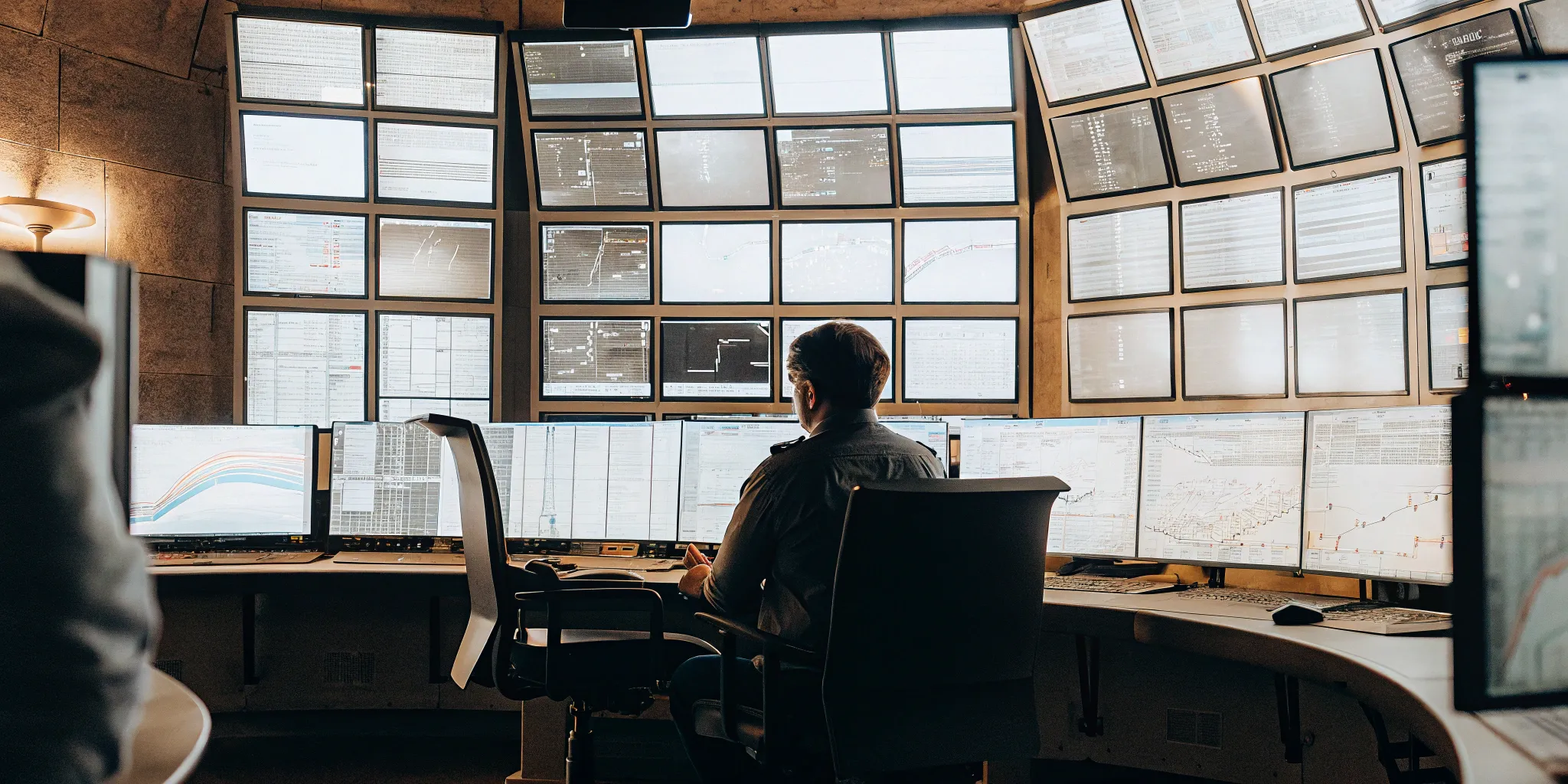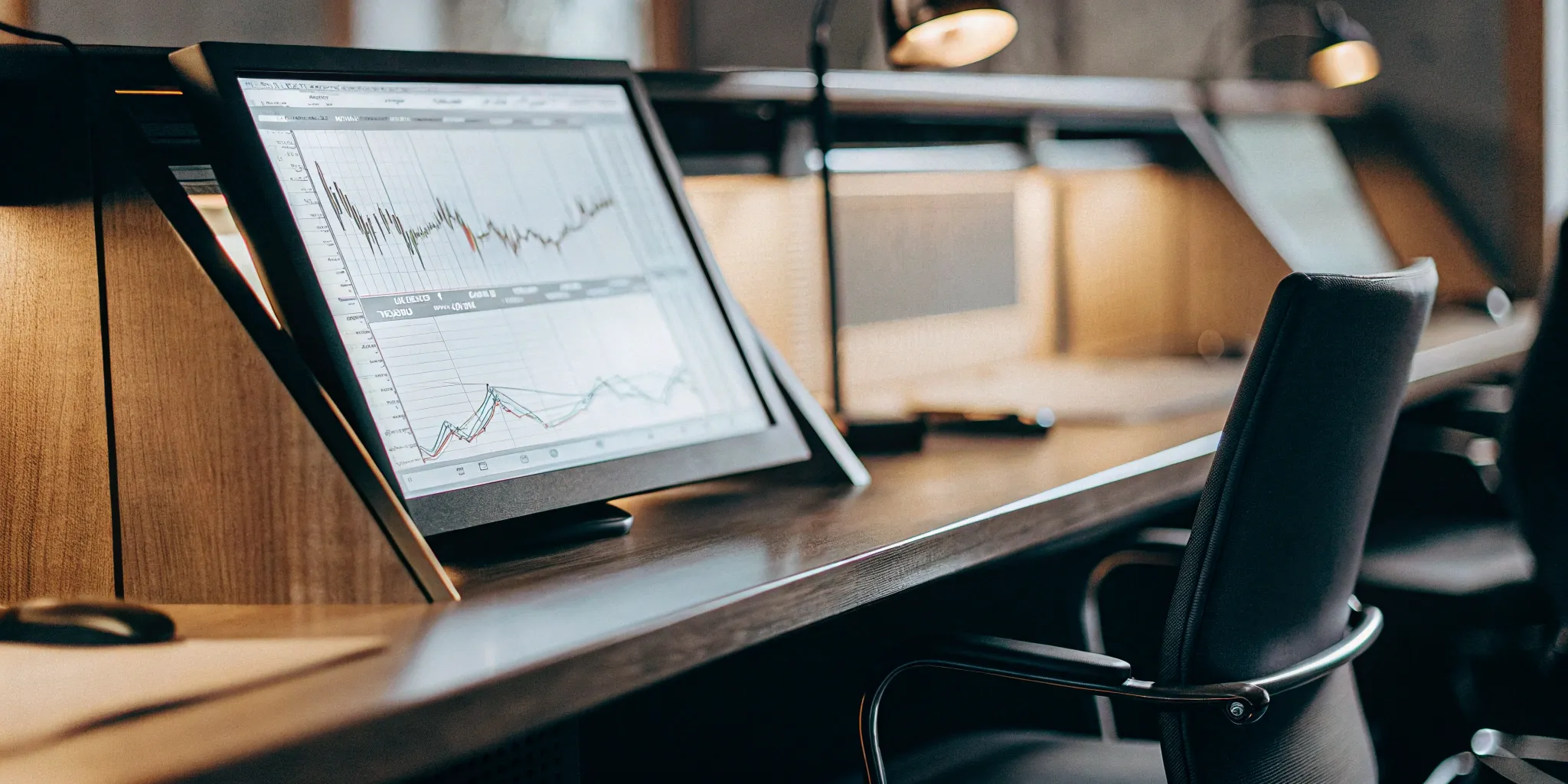Technology is changing nearly every aspect of our lives, and the financial markets are no exception. The classic image of a trader shouting orders on a chaotic floor has been replaced by screens, data, and algorithms. This evolution has created a new dilemma for modern investors: automated stock trading vs day trading. Do you stick with the traditional, hands-on approach of analyzing charts and executing trades yourself, or do you leverage the power of AI to do the heavy lifting for you? This isn’t just about convenience; it’s about performance, discipline, and accessibility. This guide will walk you through how these two powerful methods work, who they’re best for, and how to determine where you fit in this new era of trading.
Key Takeaways
- Align your trading method with your lifestyle, not the other way around: Day trading demands your full attention and a high tolerance for stress, while automated systems are built to work for you, giving you back your time and mental energy.
- Decide if you want to manage your emotions or use a system that has none: The biggest hurdle for most traders is the psychological pressure of making split-second decisions. Automated trading removes this variable by relying on consistent, data-driven logic.
- Proof beats promises every time: Instead of relying on claims of high returns, look for verifiable proof of performance, like a public track record. Real data is the only way to gauge a system’s long-term reliability and build confidence in your choice.
What Is Automated Stock Trading?
Think of automated stock trading as setting up a smart assistant for your investments. Instead of being glued to your screen watching market fluctuations, you use software to handle the buying and selling for you based on a predefined strategy. This approach isn’t just for big Wall Street firms; it’s a powerful tool that anyone, from beginners to seasoned pros, can use. The core idea is simple: you define the rules, and the system executes trades automatically when the market conditions match your criteria. This allows you to act on opportunities around the clock, without letting emotion or hesitation get in the way.
The beauty of automation is that it removes the guesswork and the emotional rollercoaster that often comes with manual trading. Instead of making split-second decisions based on a gut feeling, you’re relying on a consistent, data-driven plan. This method allows you to implement a strategy and stick to it, which is one of the hardest parts of trading. For many, it’s a way to participate in the markets more efficiently, turning a complex activity into a more manageable, hands-off process. At FN Capital, we’ve built our entire system around this principle, using our FAST AI algorithm to provide a fully autonomous trading solution.
How Do Automated Trading Systems Work?
At its heart, an automated trading system is your personal market watchdog, operating 24/7. You start by setting up specific rules—for example, “buy this asset if its price drops by 2%, and sell if it rises by 4%.” The software then constantly scans the market for these exact conditions. Once a trigger is met, it executes the trade instantly, far faster than a human ever could. This continuous monitoring is a game-changer, as it frees you from needing to watch the charts all day. It also helps reduce the stress and anxiety that can lead to impulsive decisions, letting you focus on your strategy rather than the market’s every move.
What Powers an Automated Trading System?
The engine behind any automated trading system is its algorithms—a set of instructions that tells the software exactly what to do and when. In simpler systems, these are basic “if-then” rules you create yourself. However, more advanced platforms use sophisticated quantitative trading models that can analyze massive amounts of market data to find high-probability opportunities. A key advantage here is the ability to backtest a strategy. This means you can run your algorithm against historical market data to see how it would have performed in the past, helping you refine your approach before putting real money on the line. It’s this combination of rules, data, and testing that gives automated systems their power.
What Is Day Trading?
If automated trading is like having a chauffeur, day trading is like getting behind the wheel of a race car. At its core, day trading is a strategy where you buy and sell financial instruments—like stocks or forex pairs—all within the same trading day. The goal isn’t to hold assets for long-term growth; it’s to profit from small, rapid price fluctuations. Traders often use leverage to make those small gains more substantial, but this also magnifies the risk.
Unlike set-it-and-forget-it approaches, day trading is incredibly hands-on. It’s an active strategy that demands your full attention and a deep understanding of market dynamics. You aren’t just making one or two trades; you’re often executing dozens of them before the market closes. This high-frequency activity is what separates day traders from traditional investors. While automated systems like FN Capital’s FAST AI are built to handle this pace without emotion, a human day trader must manage the pressure and make split-second decisions on their own.
What Does Day Trading Involve?
Think of day trading less as a hobby and more as a full-time job. It requires you to be glued to your screen, constantly monitoring market conditions and price charts. You can’t just check in during your lunch break; you have to be present and focused throughout the trading day to spot opportunities and manage your open positions. This often involves using specialized software and setting up multiple monitors to track data in real time. It’s a discipline that demands quick thinking, a steady nerve, and the ability to make decisions under pressure without letting fear or greed take over.
Common Day Trading Strategies
Day traders use several different methods to find profitable opportunities. Some of the most common day trading strategies include scalping, where a trader makes a large number of trades throughout the day to capture tiny price changes. These small wins are meant to add up to a significant profit. Another popular method is momentum trading, which involves identifying a stock or asset that is moving decisively in one direction and riding that trend until it shows signs of reversing. Each strategy requires a different mindset and a specific set of technical indicators to guide your decisions.
Automated Trading vs. Day Trading: Key Differences
On the surface, automated trading and day trading seem to have the same goal: generate profits from market movements. But when you look closer, they are fundamentally different approaches, almost like comparing a self-driving car to a race car. One is built for systematic, hands-off efficiency, while the other demands intense, hands-on focus and skill. Understanding these differences is the first step in figuring out which path aligns with your financial goals, your personality, and, most importantly, your lifestyle.
Day trading puts you in the driver’s seat. You’re the one watching the charts, analyzing the news, and making split-second decisions to buy or sell. It’s an active, high-engagement role that requires your full attention. Automated trading, on the other hand, hands the keys over to a sophisticated system. You set the strategy, but an algorithm does the heavy lifting, executing trades based on predefined rules and data analysis. This isn’t just about convenience; it’s a philosophical split between trusting human intuition versus trusting computational logic. Let’s break down exactly what sets these two methods apart.
Time Commitment and Your Lifestyle
Day trading isn’t a hobby; it’s a job. It demands that you are present and focused for the entire trading day, glued to your screen to catch fleeting opportunities. You’re constantly monitoring price action, reacting to economic news, and managing open positions. This high-stakes environment can be thrilling, but it requires a significant lifestyle adjustment. In contrast, automated systems are designed to work for you around the clock. An AI-powered platform can monitor markets and execute trades 24/7 without you needing to be there. This makes it a powerful option for retail investors who want to participate in the markets without sacrificing their day job or personal time.
How Each Approach Manages Risk
In day trading, risk management is a manual and intensely psychological process. You have to set your own stop-losses and profit targets and, most importantly, have the discipline to stick to them, even when your emotions are screaming at you to do otherwise. For automated systems, risk management is built directly into the code. Sophisticated algorithms can analyze historical data to backtest strategies and optimize for the best risk-to-reward ratio. Systems like FN Capital’s DART (Dynamic Algorithmic Risk Tool) take this a step further, offering real-time risk mitigation by automatically adjusting trade sizes and exposure based on current market volatility. This removes the guesswork and emotional hesitation from risk decisions.
The Psychology of Trading: Human vs. Machine
The biggest challenge for most day traders isn’t finding a winning strategy—it’s mastering their own psychology. The constant pressure can lead to emotional decisions fueled by fear, greed, or the infamous “fear of missing out” (FOMO). While some traders enjoy the feeling of control, human bias is often the single biggest point of failure. Automated trading systems operate without emotion. An AI makes decisions based purely on data, probabilities, and the parameters it’s been given. This approach to quantitative trading ensures that every trade is executed with cold, consistent logic, protecting your strategy from the emotional roller coaster of the markets.
The Tech and Tools Behind Each Method
A day trader’s toolkit consists of charting platforms, news feeds, and a fast brokerage connection. These tools provide the information, but the trader is the central processing unit who must interpret it all and act. The technology serves the trader. In automated trading, the technology is the trader. These systems use powerful software to execute trades based on pre-set rules. Advanced AI platforms can process market data at speeds no human can match, identifying complex patterns and executing trades with precision. By leveraging big data in investing, these algorithms can find opportunities that would be completely invisible to the human eye.
Automated vs. Day Trading: The Pros and Cons
Deciding between an automated system and manual day trading is a major choice, and there’s no single right answer. The best path for you depends entirely on your personality, lifestyle, and what you hope to achieve in the market. Are you looking for a hands-off way to grow your capital without the stress of watching charts all day? Or do you thrive on the challenge of analyzing the market and making split-second decisions? Both approaches have their champions and their critics.
The key is to understand what you’re signing up for. Automated trading promises discipline and efficiency by letting an algorithm do the heavy lifting, while day trading offers complete control and a direct, hands-on market experience. Each has unique benefits and significant risks. In this section, we’ll lay out the pros and cons of both methods, side-by-side. My goal is to give you a clear, honest picture so you can figure out which approach truly aligns with your financial goals and temperament.
The Perks of Automated Trading
The most powerful advantage of automated trading is its ability to operate without emotion. An AI-powered system like FAST AI executes trades based on pure data and predefined rules, so it never gets greedy, fearful, or tired. It can monitor markets 24/7, identifying opportunities you might miss while you’re sleeping or at your day job. This hands-off approach frees up your time and mental energy.
Another major perk is the power of quantitative trading, which relies on extensive backtesting and data analysis. A well-designed algorithm can analyze years of market data to refine its strategy—something that’s nearly impossible for a human to do manually. This data-driven process removes guesswork and helps create a more consistent, disciplined trading plan that isn’t swayed by market noise.
The Downsides of Automated Trading
Of course, not all automated systems are created equal. A common challenge is the complexity involved in setting one up from scratch, which often requires coding skills and a deep understanding of market mechanics. Many off-the-shelf bots are based on simple, backward-looking indicators that can fail when market conditions change unexpectedly. This is why a system’s quality and history are so important.
The idea that any bot can print money is a myth; a poorly designed algorithm can lose money just as fast as a panicked human. That’s why it’s crucial to look for solutions with a transparent and verified track record. This provides proof that the system can perform consistently over time, rather than just relying on theoretical promises.
The Upside of Day Trading
For those who enjoy being in the driver’s seat, day trading offers a hands-on, engaging experience. You are in complete control of every decision, from when to enter a trade to when to exit. This direct involvement can be a powerful learning tool, giving you an intuitive feel for market movements and price action. Many traders find deep satisfaction in successfully analyzing the market and executing a profitable trade based on their own skills.
Modern day-trading software has also made the process more efficient, with tools for charting, analysis, and quick order execution. For traders who have the time and discipline to dedicate to it, day trading can be a rewarding and intellectually stimulating activity.
The Risks of Day Trading
The biggest risk in day trading is human emotion. The pressure of managing your own money in a fast-moving market can lead to impulsive decisions, like chasing losses or exiting winning trades too early. It’s a high-stress activity that requires immense discipline, and it’s well-documented that a large percentage of day traders lose money over the long run.
Beyond the psychological challenges, day trading is incredibly time-consuming and can feel like a full-time job. You also have to account for costs like brokerage fees and data subscriptions, which can eat into your profits. Effective risk mitigation is entirely up to you, and one bad day can wipe out weeks of gains if you don’t have strict rules in place.
What Skills Do You Need to Succeed?
Whether you lean toward automated systems or manual day trading, success isn’t accidental. Each path demands a distinct set of skills, and knowing where your strengths lie can make all the difference. It’s not about being a genius in every area; it’s about aligning your natural talents and learned abilities with the right trading approach. Think of it as choosing the right tool for the job—and for the person using it. Let’s break down what it takes to do well in each arena so you can see where you might fit best.
Skills for Automated Trading: Tech and Analysis
With automated trading, your primary role shifts from a hands-on trader to a strategic overseer. Instead of reacting to every market flicker, your job is to set the system up for success. This means your skills are more analytical and technical. Automated systems allow for extensive backtesting and optimization of strategies, letting you refine your approach with historical data before risking a dime.
The good news is you don’t need to be a coding wizard. Modern automated trading often uses software that executes trades based on rules you define, freeing you to focus on strategy. With a solution like FN Capital’s FAST AI, the heavy lifting is already done. The key skill becomes due diligence: analyzing the system’s verified track record, understanding its risk management, and trusting the process.
Skills for Day Trading: Speed and Market Insight
Day trading is an entirely different game, demanding sharp instincts and a deep connection to the market’s pulse. Here, you are the decision-maker, and success hinges on your ability to act quickly and decisively. While day-trading software helps execute orders faster than humanly possible, the strategy and timing are all on you. Speed is critical for capitalizing on small, fleeting price movements throughout the day.
Beyond speed, you need a solid understanding of market dynamics and the discipline to stick to your plan. A successful day trader is adept at quickly analyzing market conditions and executing trades without hesitation. Your software should fit your trading style, not the other way around. This requires emotional resilience to handle the inevitable losses and the focus to stay sharp through hours of intense concentration.
Breaking Down the Costs and Returns
Let’s talk about money—what it costs to get started and what you can realistically expect back. Both automated trading and day trading require capital, but the structure of the costs and the nature of the returns are quite different. Understanding these financial aspects is key to deciding which path aligns with your goals and resources. It’s not just about picking a strategy; it’s about making a sound financial decision that works for you.
What’s the Initial Investment?
For day traders, the primary cost is the capital in your trading account. You’ll also face platform fees, data subscriptions, and potentially the cost of educational courses. The initial outlay can be significant, and it’s money you must be prepared to lose as you learn the ropes. With automated trading, your investment is primarily in the system itself. While some traders try to build their own, this requires deep technical expertise and can be expensive. A more direct path is a software license or subscription, but it’s vital to choose the right software to avoid hidden costs. At FN Capital, we keep it straightforward with clear pricing and license options so you know exactly what your investment is from day one.
What Are the Potential Returns?
This is the big question, isn’t it? Day trading offers the allure of high returns, but the reality is often different. Studies show it’s incredibly difficult for individuals to consistently make money due to intense market pressure and volatility. The potential for big wins comes with an equally high risk of significant losses. Automated trading aims for consistency over home runs. A well-designed AI system operates without emotion, executing a data-driven strategy for more predictable performance. However, the quality of the algorithm is everything—a poor one can lead to disaster, like the infamous Knight Capital software error. That’s why a transparent, verifiable track record is non-negotiable. Our FAST AI system has a publicly verified 4-year performance on FX Blue, offering a data-backed approach designed for steady growth.
Choosing Your Path: Which Method Fits You?

Deciding between automated trading and day trading isn’t about picking a “winner.” It’s about finding the approach that aligns with your life, your goals, and your personality. There’s no one-size-fits-all answer, and what works for a seasoned pro might not be the right fit for someone just looking to generate passive income. The good news is that you don’t have to be a Wall Street veteran or a coding expert to participate in the markets. Modern tools have made sophisticated strategies more accessible than ever.
The most important step is to be honest with yourself about what you’re looking for. Are you seeking a hands-on, adrenaline-fueled experience, or would you prefer a system that works for you in the background? Do you have hours to dedicate to watching charts, or is your time better spent elsewhere? At FN Capital, we work with everyone from new investors to large-scale institutions, and we’ve seen firsthand that success comes from choosing a path that complements your strengths and respects your time. This choice is deeply personal, and understanding the core differences is the first step toward making a smart decision for your financial future.
Find Your Trading Personality
Before you commit to a strategy, take a moment for some self-reflection. Are you someone who loves digging into data and building complex systems from scratch? Or does the idea of a set-it-and-forget-it approach sound more appealing? If you thrive on making split-second decisions and enjoy the process of active management, day trading might feel like a natural fit. However, if you want to remove emotion from the equation and let a data-driven system handle the heavy lifting, an automated solution is likely your best bet. Your tolerance for stress and the amount of time you can realistically commit are huge factors. An automated system like our БЫСТРЫЙ ИСКУССТВЕННЫЙ ИНТЕЛЛЕКТ works 24/5, so you don’t have to.
Questions to Ask Before You Start
To get clear on your direction, ask yourself a few direct questions. First, what is your primary goal—are you aiming for steady, passive growth or chasing rapid, high-risk gains? Second, how much time can you truly dedicate each week? Be realistic. Third, are you more comfortable trusting your own moment-to-moment judgment or the performance of a system with a verified track record? Answering these honestly will point you toward the right method. Remember, you don’t have to go all-in on one strategy. Many successful investors use a hybrid approach, dedicating one account to automated strategies while experimenting with manual trades in another.
Trading Myths, Busted
The world of trading is full of larger-than-life stories and whispered secrets, making it hard to separate fact from fiction. Whether you’re drawn to the high-tech appeal of automated systems or the hands-on action of day trading, you’ve likely encountered some common beliefs that don’t quite hold up to scrutiny. Believing these myths can lead to costly mistakes, unrealistic expectations, and a lot of frustration. Before you put any capital on the line, it’s important to have a clear-eyed view of what each approach truly involves.
Let’s cut through the noise and get straight to the truth. By tackling these misconceptions head-on, you can build a more realistic and sustainable strategy for your financial goals. We’ll look at the most persistent myths surrounding both automated trading and day trading, giving you the clarity needed to decide which path, if any, aligns with your resources, personality, and expectations. Think of this as your reality check—a necessary step before you commit your time and energy to the markets.
Common Myths About Automated Trading
One of the biggest myths is that automated trading is a magical, hands-off system that prints money without any risk. The reality is that no system is perfect. A trustworthy automated platform is built on probability and sophisticated risk mitigation, not on a guarantee of winning every single trade. That’s why a transparent and publicly verified track record is far more valuable than a promise of perfection.
Another common misconception is that you need to be a coding expert to get started. While building a trading algorithm from scratch does require technical skill, many modern solutions are designed to be completely hands-free for the user. Companies like FN Capital handle all the complex development and execution, allowing you to access powerful AI without writing a single line of code. The goal is to make institutional-grade technology accessible to everyone.
Common Myths About Day Trading
Many people believe day trading is an easy path to wealth, especially with all the trading software available. While technology can execute trades quickly, it can’t replace the skill, discipline, and strategy required to make consistently profitable decisions. The software is just a tool; you still have to be the master craftsman. This leads to the next myth: that most day traders are successful. Studies have shown that a large percentage of individual day traders do not end up profitable over the long term.
This often happens because they fall for the third myth: that you can succeed without a rigid strategy. Successful day trading requires a well-defined plan that dictates when to enter, when to exit, and how to manage risk on every single trade. Without it, it’s easy to let fear and greed drive your decisions. This is where automated systems have a distinct advantage, as they operate purely on data-driven financial models without emotional interference.
What’s Next for Trading?
The trading landscape is constantly evolving, and the rise of artificial intelligence is accelerating that change. It’s not about replacing human insight entirely, but about equipping traders with smarter, faster, and more powerful tools. The future isn’t about choosing between human or machine; it’s about finding the right synergy between them to achieve your financial goals. This shift is making sophisticated strategies more accessible while pushing the boundaries of what’s possible in the market.
The Future of Automated Systems
Automated systems are quickly becoming the standard for a reason. They can monitor markets around the clock, executing trades based on pre-set rules without the stress or fatigue that affects human traders. The real game-changer is the integration of AI, which offers pattern recognition and processing speeds far beyond human capability. These systems can analyze vast amounts of data to identify high-probability opportunities that might otherwise go unnoticed. For many, this means access to hands-free AI trading that works for them, allowing them to build wealth without being glued to a screen. The future here is about accessibility and precision, giving everyday investors the kind of powerful tools that were once reserved for large financial institutions.
How Day Trading Is Changing
Day trading isn’t going away, but it is getting a major upgrade. The classic image of a trader running on intuition and adrenaline is being replaced by a more strategic, data-driven approach. AI is shifting the focus from gut feelings to precision-based execution. Modern day trading software automates many of the tedious aspects of trading, freeing up professionals to focus on strategy rather than manual execution. Many successful traders now use a hybrid model, combining their market expertise with the analytical power of AI. This allows them to leverage advanced modeling and high-frequency execution frameworks to gain a measurable edge in speed and consistency, turning what was once an art into more of a science.
Related Articles
- Achieve Financial Autonomy with Automated Trading
- Algo Trading for Beginners Guide
- Enhance Your Trading Strategy with Automated Trading Systems
- Automated Futures Trading Bots: How They Work & Which to Choose
- Best Trading Tools for Beginners
Frequently Asked Questions
Is automated trading completely hands-off, or do I still need to do something? While an automated system handles the 24/7 market monitoring and trade execution, your role shifts from trader to strategic overseer. The initial work involves doing your homework to choose a reliable system with a proven history. Once it’s running, the day-to-day trading is hands-off, but it’s wise to periodically review its performance to ensure it still aligns with your financial goals. Think of it less as “set it and forget it” and more as “set it and trust the process.”
Which approach is better if I’m just starting out? For most beginners, automated trading offers a much smoother entry into the markets. Day trading has a steep learning curve and requires significant time, emotional control, and a deep understanding of market dynamics—things that are tough to master overnight. An automated system allows you to participate in market opportunities based on a consistent, data-driven strategy without the intense pressure and psychological stress that often cause new traders to fail.
How can I tell if an automated trading service is trustworthy? Look for proof, not just promises. A legitimate service will be transparent and won’t hide behind flashy marketing claims. The most important thing to look for is a long-term, publicly verified track record from a neutral third party, like FX Blue. This shows you exactly how the system has performed with real money over several years, through different market conditions. Avoid any system that guarantees unrealistic returns or isn’t open about its strategy and risk controls.
What happens to an automated system during a sudden market crash? A well-designed automated system isn’t built to predict a crash, but it is built to react to one by managing risk. Sophisticated platforms have risk management protocols coded directly into their logic. For example, a system might automatically reduce trade sizes, widen stop-losses, or even pause trading entirely when it detects extreme market volatility. The goal is to protect your capital by sticking to its rules, even when the market is in chaos.
Can I use an automated system to supplement my own day trading? Absolutely. Many experienced traders use a hybrid approach. They let an automated system manage a portion of their portfolio to generate consistent, passive returns. This creates a stable foundation that frees them up to pursue more active, higher-risk day trading strategies with another part of their capital. It’s a smart way to diversify your strategies and balance a hands-on approach with a hands-off one.
